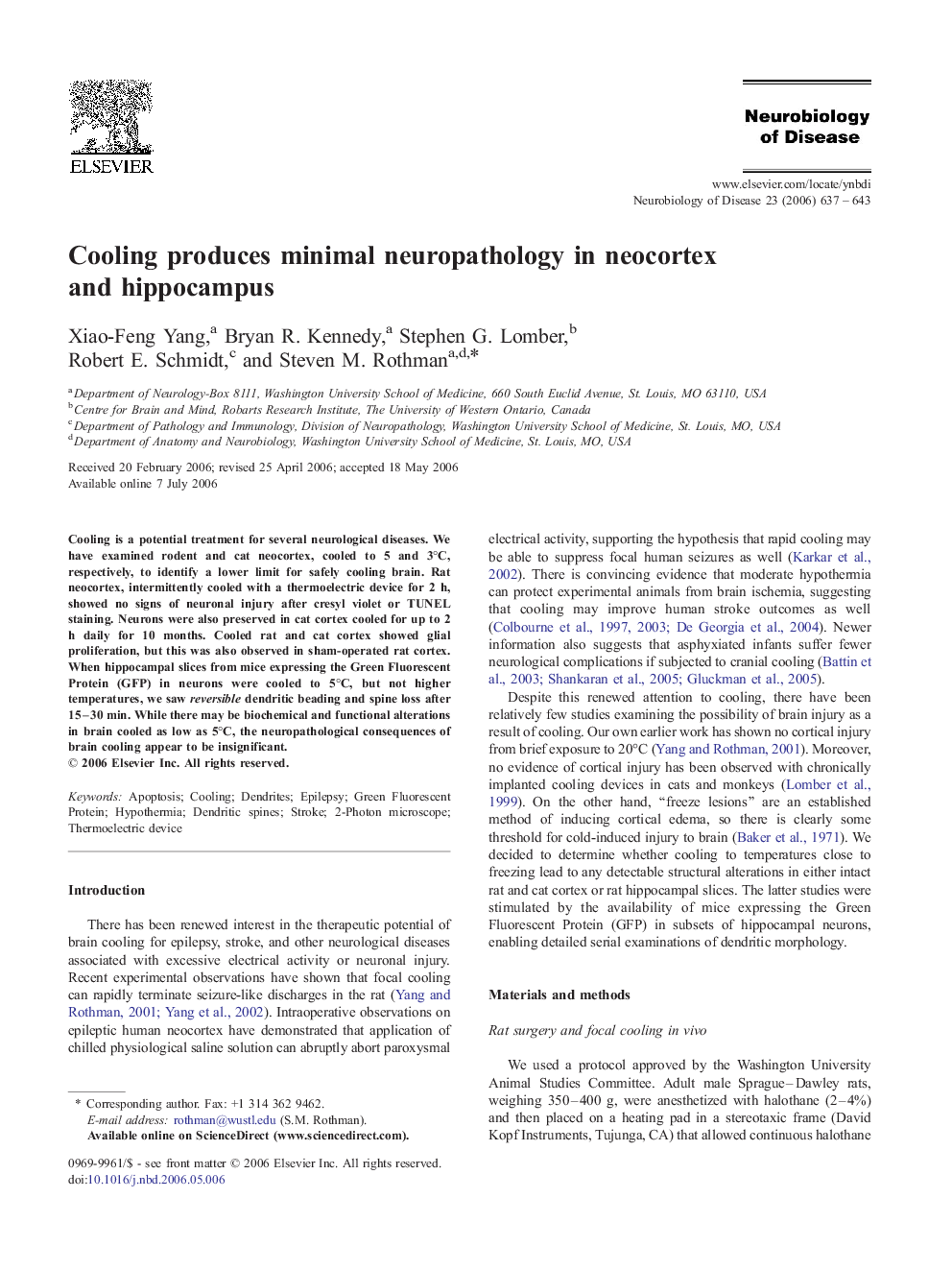| Article ID | Journal | Published Year | Pages | File Type |
|---|---|---|---|---|
| 3070633 | Neurobiology of Disease | 2006 | 7 Pages |
Cooling is a potential treatment for several neurological diseases. We have examined rodent and cat neocortex, cooled to 5 and 3°C, respectively, to identify a lower limit for safely cooling brain. Rat neocortex, intermittently cooled with a thermoelectric device for 2 h, showed no signs of neuronal injury after cresyl violet or TUNEL staining. Neurons were also preserved in cat cortex cooled for up to 2 h daily for 10 months. Cooled rat and cat cortex showed glial proliferation, but this was also observed in sham-operated rat cortex. When hippocampal slices from mice expressing the Green Fluorescent Protein (GFP) in neurons were cooled to 5°C, but not higher temperatures, we saw reversible dendritic beading and spine loss after 15–30 min. While there may be biochemical and functional alterations in brain cooled as low as 5°C, the neuropathological consequences of brain cooling appear to be insignificant.
